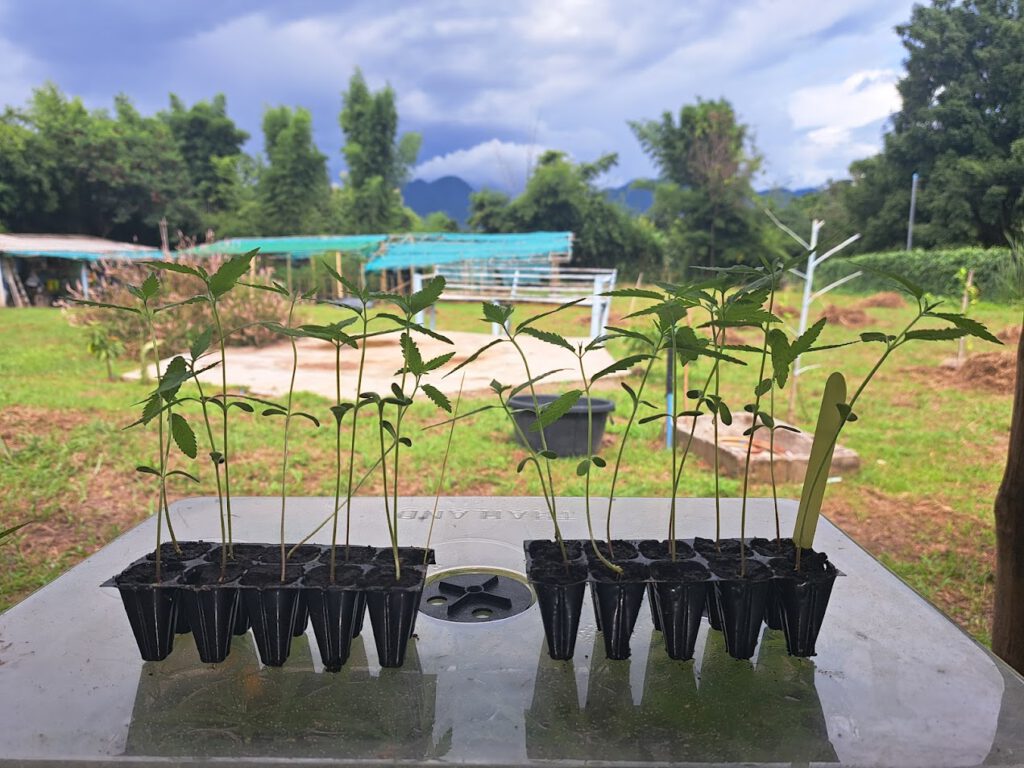Knowledge
Thai Landrace Cannabis: Roots of Tropical Genetics
Thai Landrace Cannabis: Roots of Tropical Genetics
Few names in cannabis carry as much mystique as Thai. From the legendary “Thai sticks” of the 1970s to the incense-scented sativas that shaped entire families of hybrids, Thai landraces are a cornerstone of cannabis history. But these aren’t just legends — the genetics are still alive in the hills, islands, and valleys of Thailand, evolving, adapting, and shaping the future of tropical cultivation.
At Ritual Genetics, we believe understanding these roots — and the unique strains that define them — is essential.
What Makes a Landrace?
A landrace is a cannabis variety that developed naturally in a specific region, shaped by climate, soil, and human selection over centuries. Unlike modern hybrids, landraces weren’t bred for convenience; they adapted to their local environment.
Thailand’s geography — tropical lowlands, humid jungles, oceanic islands, and cooler mountain valleys — gave rise to diverse landraces that thrive in monsoon rains and equatorial light cycles. These plants are more than “old‑school sativas” — they’re living blueprints of survival.
A Brief History of Thai Cannabis
In the 1960s and 70s, the world discovered Thai cannabis through Thai sticks — buds tied to bamboo skewers, sometimes dipped in hash oil, exported in massive volumes. Smooth, aromatic, and almost electric in their cerebral high, they became a legend in U.S. counterculture.
But Thai cannabis wasn’t just a consumer product. Its genetics flowed into some of the most influential hybrids ever made: Original Haze owes part of its soaring profile to Thai parents; Chocolate Thai brought its unique spicy, earthy‑sweet flavor into global breeding.
By the late 1980s, government crackdowns nearly erased traditional cultivation, but enough survived — in mountain villages, island plots, and in the seed collections of travelers — to keep these strains alive.
Signature Thai Landraces
KD Koh Tao
Originating on Koh Tao in the Gulf of Thailand, this maritime selection shows the hallmarks of island adaptation: wind‑firm stems, salt‑air tolerance, and exceptional vigor in sandy or fast‑draining soils. Plants are tall and elegant with narrow leaflets and elongated spears. Aromas lean toward citrus zest, lemongrass, and clean incense with a cool herbal edge. Flowering is long — typically 14–18 weeks — but the payoff is a clear, soaring, long‑lasting effect that typifies classic Thai energy without heaviness.
Tanao Sri Red
From the Tanao Sri mountain range along the Thai–Myanmar border, this landrace often shows reddish pistils and occasional ruddy tones in cured flowers. It’s more resinous than many Thais, with spice, sandalwood, and tropical fruit on the nose. The effect remains bright and cerebral but carries a subtle body warmth that reins in the more psychedelic edge.
Rudder
A lowland/coastal variety once grown nearer sea level, Rudder is adaptable and productive, finishing faster than most mountain or island lines. Still tall by modern standards, it can wrap in roughly 12–13 weeks in the right latitude. Expect sweet mango, pepper, and soft floral notes with a smooth smoke. Historically a “workhorse,” it’s valued for reliability and yield under humid conditions.
Together, KD Koh Tao, Tanao Sri Red, and Rudder showcase the range within Thai genetics: island incense sativas, mountain reds, and coastal workhorses. All share the unmistakable Thai signature — a clear, energetic, mood‑lifting effect.
Traits of Thai Landraces
- Growth: Tall, narrow‑leafed plants that thrive outdoors, often topping 3–4 meters.
- Flowering: Long seasons, from ~12 weeks (Rudder) up to 16–20 weeks (Tanao Sri, some island lines).
- Aromas: Citrus, lemongrass, spice, sandalwood, chocolate, and tropical fruit, depending on provenance.
- Effects: Clear, soaring, often psychedelic — very different from modern couchlock hybrids.
- Adaptability: Natural resistance to humidity and molds; ideal breeding stock for tropical climates.
The Challenges of Growing Thai Landraces
- Patience: Long flowering means months of commitment before harvest.
- Space: Height and lankiness challenge indoor setups without training or trellising.
- Selection: Open‑pollinated lines can show wide phenotype variation.
For growers who lean in, the rewards are flavors and highs that modern hybrids rarely match.
Why Thai Genetics Still Matter
- Diversity: Rare terpenes and cannabinoid expressions expand the modern gene pool.
- Adaptation: Proven performance in heat and humidity where many hybrids fail.
- Legacy: Many global legends (Haze, Chocolate Thai, Durban × Thai) trace back to Thai inputs.
These aren’t relics; they are reservoirs of traits modern breeding still needs.
Preserving and Evolving
Preservation continues across Thailand — from island plots on Koh Tao to mountain gardens in Tanao Sri — while breeders collect and stabilize seed for future work.
At Ritual Genetics, we treat these lines as foundations. Our approach:
- Preserve: Keep pure lines alive and accessible.
- Evolve: Use Thai landraces as parents, blending their resilience with faster, more commercially viable genetics.
This keeps the spirit of Thai cannabis alive — not only as a legend, but as a living force.
Conclusion
From the island incense of KD Koh Tao to the resin‑rich Tanao Sri Red and the coastal vigor of Rudder, Thai landrace cannabis remains one of the richest reservoirs of diversity in the plant. These strains deliver unique flavors, effects, and resilience that modern hybrids often lack.
At Ritual Genetics, we honor these roots while pushing them forward — crafting seeds that thrive in tropical climates, preserve history, and spark the same awe that made Thai cannabis a legend in the first place. The next generation of cannabis doesn’t forget its past. It grows from it.

